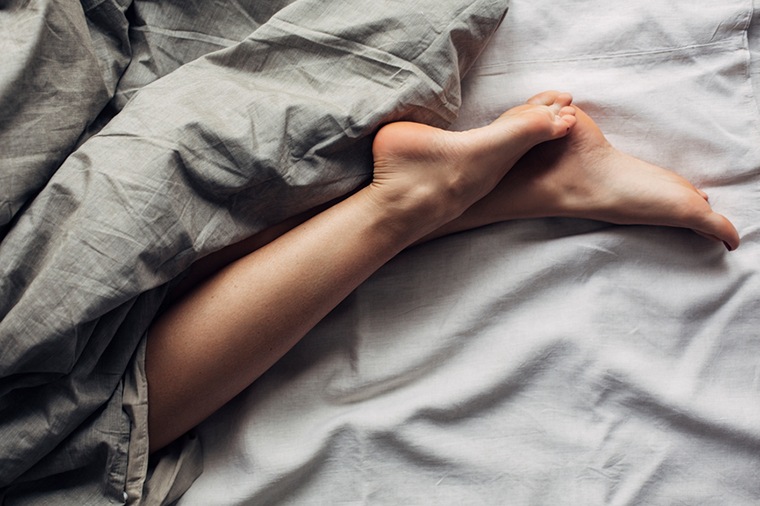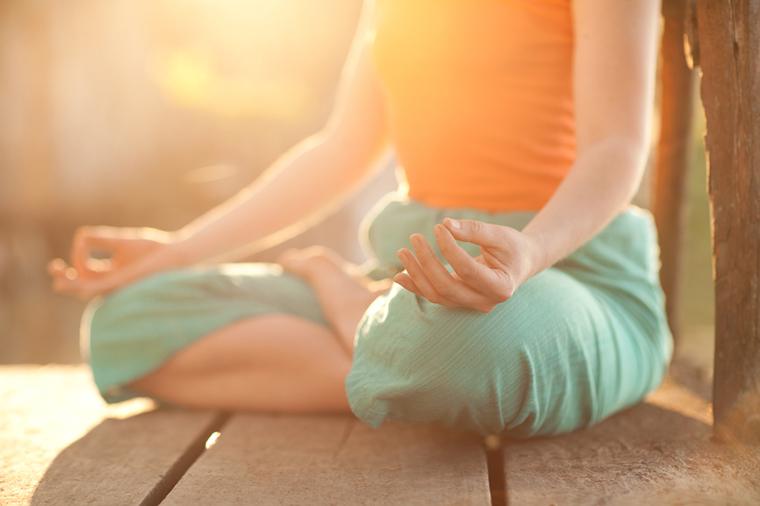Is the Secret to Getting Your Best Sleep Ever All in Treating It Like a HIIT Workout?
Developed by integrative medicine doctor (and self-proclaimed workout junkie) Tiffany Lester, M.D., The Unconscious Workout is a 21-day digital boot camp filled with genius hacks Dr. Lester gleaned while in medical school and residency, when she had to become really creative about getting shut-eye.

One of the first things she teaches is the concept of sleep stages, which she likens to the various phases of a HIIT workout—so if you're a Fhitting Room or OrangeTheory junkie, it'll sound very familiar.
“In a HIIT workout, there’s a reason why you go through the whole cycle of low and high intensity," Dr. Lester says. Just as you’d be a mess if you skipped all the rest intervals, shortchanging sleep cycles sets you up for exhaustion the next day.
But once you start sleeping right, Dr. Lester says you can expect more energy, a clearer head, and an easier time dealing with a host of health issues, from adrenal fatigue to gut problems. “I can do a lot of things to help people feel better, but if they’re not sleeping well, we’re just running uphill,” she says.

{{post.sponsorText}}
Keep reading to find out what sleep stages you should be aiming to maximize each night—and how to train yourself to cycle through them more effectively.

Stage 1: Pre-sleep
Dr. Lester likens this phase to the warm-up of a workout. “It’s super important, but most people don’t do it,” she says. Pre-sleep is when you need to get your self-care on: Take a hot bath, read a book, dab on some essential oils, and turn off your phone. (If you need it for the alarm clock, Dr. Lester says to put it on airplane mode.)
All in, you want to take between 30 minutes and an hour—and aim for lights out by 10. (I know, my jaw dropped too.) “The body repairs itself between 10 p.m. and 2 a.m.,” she says. “If you’re not sleeping during that time, you’re not getting that restful, restorative sleep that your body needs.” If you have a hard time shutting down that early, Dr. Lester recommends taking melatonin to help reset your circadian rhythm and rearranging your daily schedule so you aren’t up late. Yes, it’s that crucial.

Stage 2: Light sleep
In an actual HIIT class, this would be the low-intensity phase, says Dr. Lester. It’s when you’re starting to doze off, but a loud noise would still wake you up.
Ideally, it should take up about 60 percent of your total sleep, but Dr. Lester says people tend to spend way more time in light sleep land. “A lot of people just alternate between light sleep and waking up,” she says. In other words, if you’re someone who tosses and turns, your sleep is about as effective as a slow walk on the treadmill—eek! The key is maximizing the time you spend in stages three and four.

Stage 3: Deep sleep
This sleep phase is the equivalent of the moderate-intensity part of a workout, says Dr. Lester—the heavy lifting, if you will. “It’s when our brain produces relaxing slow waves, and that’s when our bodies really heal,” she explains.
Unfortunately, even though deep sleep should make up 15 percent of your total sleep time, a lot of people don't get it at all. “Either they have too much cortisol at night, or they’re not exercising, which increases deep sleep,” she says.
To step up your deep sleep game, make sure you get in a workout during the day—even a quickie makes a difference—de-stress in the evening, and prioritize getting to bed early. Since this phase takes place mostly before 2 a.m., people who stay up late tend to miss out.

Stage 4: REM sleep
“When it comes to sleep, this is when you have the most active dreaming,” says Dr. Lester, who likens REM to doing hills in your HIIT class. It’s when your mind goes into overdrive processing all the information it took in the previous day, and should equal about 25 percent of your total sleep time.
But people tend to shortchange this stage by setting their alarms to go off right in the middle of it. That's because REM generally takes place in the early morning hours. Dr. Lester suggests pinpointing exactly when you need to wake up, then doing everything you can to fall asleep 450 minutes (around 7.5 hours) before. That will give you enough time to go through the recommended five, 90-minute cycles of light, deep, and REM sleep.

Stage 5: The morning routine
Just like cooling down is vital for preventing soreness the next day, your morning routine has a huge impact on the next night's sleep.
Dr. Lester recommends starting the day gently with meditation, journaling, and a healthy breakfast, before moving on to a workout. “Ideally, you should work out in the morning,” she says, noting that stimulating your body with a workout at night prevents it from achieving rest-and-digest status. Since you're already in HIIT mode, maybe a few rounds of burpees?
If you're struggling in the deep sleep department, try going to bed in the buff, stocking up on these superfoods, or doing some restorative yoga poses.
Loading More Posts...